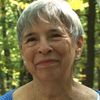This article was originally featured on VoicesofAging.com.
In my last posting (What's all this about Livability and Age-friendliness, May 2016) I talked about the broad ideas of what livability and age-friendliness mean. I described the World Health Organization's (WHO) and AARP's recognition that throughout the world we are getting older. WHO states that "the number of people aged 65 or older is projected to grow from an estimated 524 million in 2010 to nearly 1.5 billion in 2050 (WHO)." This age distribution will never reverse to a point where there will be greater numbers of younger people as compared to older people. We are headed into a permanent state of agedness. The question then becomes - how to plan for this in a thoughtful way.
WHO/AARP has developed a model that helps communities strategize meaningfully for the future. The goals inherent in this model are to help people of all ages and income levels to stay in their homes and communities (or move into them), and be important contributors to the flow of community life. The WHO/AARP model includes a set of "domains" that represent the complex and interconnected arenas that comprise an entire community: Housing, Transportation, Communication & Information, Community Support, Civic Participation & Employment, Social Participation, Respect & Social Inclusion, Outdoor Spaces & Buildings, Arts & Culture, & Educational Opportunities.
Many people in communities across the country are working on each of these "domains." However, moving towards being a Livable/Age-friendly city is a complicated process that involves big picture concepts along with smaller and smaller pieces within each domain. One of the most important domains is housing. Numerous studies show that in many areas there is a lack of affordable, accessible housing for people of all ages. Seniors find in hard to find residences appropriate for downsizing. Younger working people don't have enough options for housing near public transportation so that they don't need a car to get to their jobs. Those with lower and middle income can't find places that they can afford.
Where I live - a suburban city close to Boston - the Council on Aging (COA) and Department of Senior Services (DSS) are producing data and tools to help people make decisions about housing. Here are some examples that offer information and a practical guide on what to do. This work may be useful in your community. More helpful materials are forthcoming over the next months.
The COA and DSS looked at the number of elevator buildings to get an idea of how many residential locations offered one-floor living, something that many older adults prefer if they don't want live in a single family house. The local Assessors Database was the source of this data. In 2010 in my community of 85,000 people, 21% were age 60 and over. (By 2020 it will be 27%, and 31% in 2030). In 2014, there were only 17 condo buildings and 7 rental buildings of 8 or more stories in elevator buildings - a total of 1,986 units. Based on data from our community survey, the city needed an estimated 1,000 and 2,000 additional elevator building units with one-floor living to accommodate downsizing seniors. What are the numbers for your community? What is it doing to provide housing options?
Using U.S. 2010 American Community Survey data, we learned that the Median Household Income (in 2012 inflation adjusted dollars) for residents 65+ in my community is $30,438 for men and $26,300 for women age that are living alone. My city is considered "affluent," but there is a substantial unseen problem. Data suggest a need for housing that is affordable for fixed income seniors. Are there hidden pockets of older low-income citizens where you live? What is your community doing to help address this potential problem?
The NCOA/NDSS collected and reported data to show that "younger" older people may prefer single family homes, condos and rental units, while "older" older people may prefer condos, independent living, and assisted living. The important message is that there is need for diversity of housing for varying age groups. How much housing diversity and options are there in your town?
In addition to these types of data, there are contributions to "on the ground" work. The COA and the DSS produced a set of Housing Criteria relevant to three groups of people: developers who wish to build residences in our city; elected officials and city staff that make decisions about housing; and individuals and those who care about them to use as guidelines for selecting appropriate and accessible housing. These Housing Criteria cover General Concepts, Community Environment, Overall Home Environment, plus specific areas within the home such as Entryways and Exits, Kitchen, Bathrooms, Bedrooms, Stairways and Halls, Laundry, plus additional recommendations. The Criteria were heavily reviewed by housing and universal design experts before publication, and have received a great deal of positive feedback from city officials, developers, and individuals. The Criteria take some of the mystery out of the challenge of thinking about and finding safe accessible housing. Look at the Criteria. I think you will find them not only interesting, but a way to generate thoughts and discussions about planning for individuals and the community as a whole. The Criteria are available on-line at www.tinyurl.com/HousingCriteria or at http://www.newtonma.gov/gov/seniors/aging/age_friendly_newton.asp .
Still, with all of this good work we still face major problems. The stock of housing for older people who want to downsize, along with younger people who want smaller, reasonably priced or affordable, transportation- oriented units is significantly short of the documented need. The housing criteria can guide you in your own decision-making about housing. Developers in your area can use them in designing age-friendly, sustainable residences. Decision-makers can use them to determine what projects to approve in order to make your community livable and age-friendly for current and future citizens with choices that make sense for a Livable/age-friendly society.
Read more from Marian at VoicesofAging.com.
